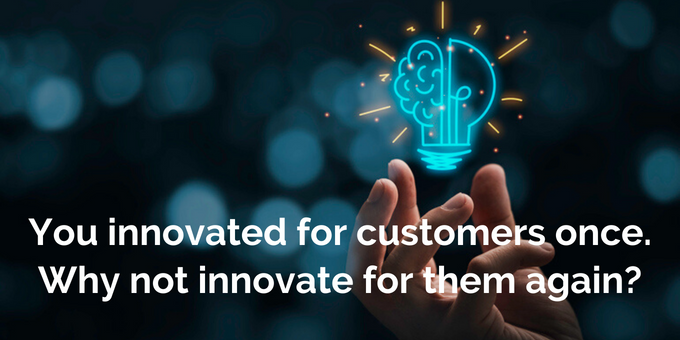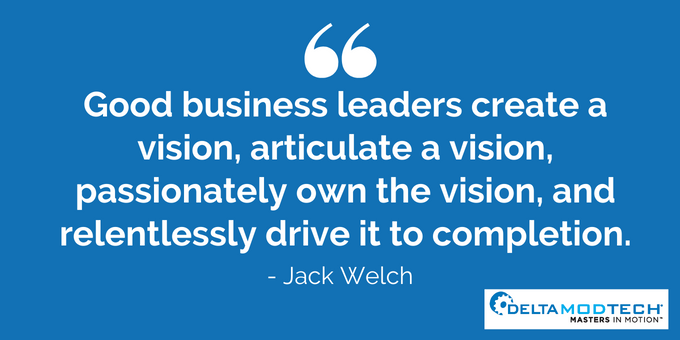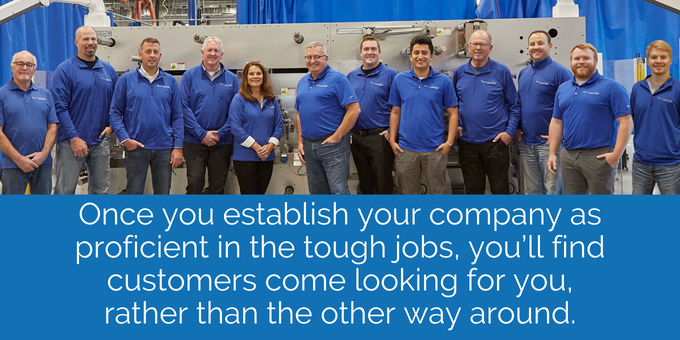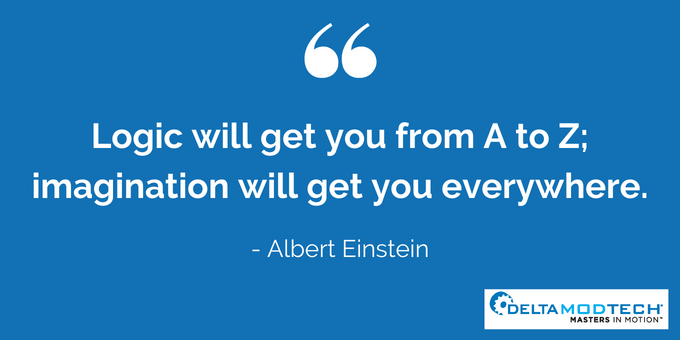
9 Ways Enhanced Converting Capabilities Can Improve Your Entire Organization
Schiebout and his small team had tried to make it work with the equipment they had, but the tolerances couldn’t be met.

With no other options, Schiebout decided to start from scratch. He stripped out his machine’s mechanical drive system and installed servo motors. With the new capabilities, accuracy improved by 25 times, even without a sophisticated control.
Scheibout was able to satisfy his customer. But adding the advanced capability wasn’t the end of the story. It was just the beginning.
Increased capabilities created an industry-leading company
Fast forward nearly fifty years later, and Dave Schiebout’s fledgling company from 1983 has grown into Delta ModTech, a company that employs over 100 engineers, technicians and service people, and is one of premier converting machine systems manufacturers in the world.
And it all started with enhanced capabilities — that servo-driven innovation.

The moral of the story is that advanced capabilities shouldn’t be viewed as merely transactional. They’re transformational. Let’s take a look at what adding new capabilities can do to your company:
1. Makes it possible to pursue new projects and new customers
How many times have you said no to an RFQ because your equipment didn’t have the functional capabilities to take on the project?
Delta ModTech is constantly approached by companies who have a project that requires enhanced performance or additional functionality. Once we’ve helped the client develop the capability, it opens the door to a whole new world of prospects and projects beyond that initial task.
2. Generates new activity for your reps
Sure, it’s great to get new customers in the portfolio. But what about your current customers? You know, those loyal folks who have helped build your company?

For example, how thrilled will they be if you convert their multi-step process into a single-pass approach, and improve throughput by 11x? (See the Tapemark case study as an example.)
Suddenly, your reps have a very good reason to reach out to past customers, and your finance team will love it too, as we’ll illustrate in the next point.
3. Improves your sales and marketing efficiency, which boosts profits
Now that you have a reason to reach out to past customers, your sales and marketing efforts become more efficient.
Amy Gallo writes in the Harvard Business Review, “Depending on which study you believe, and what industry you’re in, acquiring a new customer is anywhere from five to 25 times more expensive than retaining an existing one.”
Even more compelling is the research done by Bain and Associates:
“Across a wide range of businesses, customers generate increasing profits each year they stay with a company. In financial services, for example, a 5% increase in customer retention produces more than a 25% increase in profit. Why? Return customers tend to buy more from a company over time.”
4. Helps with employee retention
Ann Wyatt, owner of Ann Wyatt Recruiting and a specialist in recruiting in the manufacturing space, notes, “I think a lot of employees leave because they don’t feel like there will ever be any changes or growth opportunities.”

ANN WYATT, ANN WYATT RECRUITING
“I think a lot of employees leave because they don’t feel like there will ever be any changes or growth opportunities.”
Add in more capabilities, and employees will likely need to develop new skills. That means personal growth, which can only help people in the long run.
Plus you’re giving employees a sign that your company is in growth mode. Even if there isn’t a specific new job today, you’re giving the signal there could be one tomorrow.
5. Shows your employees that you are serious about the company’s vision
Vision can be a powerful motivator for a company. Nothing stirs people’s imaginations and lights a motivational fire like sharing a bold vision for the future. But talk is cheap when it comes to creating a company vision.
Unless you’re taking actual steps to realize it, your stated vision becomes nothing more than an empty promise.
For example, what if your vision is to become the go-to resource for complex medical device manufacturing? When someone sees you acquire the equipment that allows you to take on that type of work, then they know you’re committed to the vision. That’s when they get on board.

6. Creates a competitive edge by making your company learn how to do new things
In the past, if you wanted to gain a competitive edge, you just bought a new piece of equipment. But with change occurring so rapidly in the marketplace, it’s more about not only buying new equipment, but then adapting your company to the processes that come with it.
In an article on adaptability in the Harvard Business Review, Martin Reeves writes:
Sustainable competitive advantage no longer arises exclusively from position, scale, and first-order capabilities in producing or delivering an offering. All those are essentially static. So where does it come from? Increasingly, managers are finding that it stems from the “second-order” organizational capabilities that foster rapid adaptation. Instead of being really good at doing some particular thing, companies must be really good at learning how to do new things.
7. Allows for the retirement of a tired piece of equipment that was struggling with cost and quality
At what point do you see diminishing returns from a piece of old equipment? Yes, it’s getting the job done, but are you choosing an old business with low margins just because the equipment “still works?”
Old equipment might help you keep a book of business, but it also may result in:
- Unplanned downtime
- Limited availability of spare parts
- Lack of support from an OEM
- Not enough operators to run the machine
- More safety risks (leaks, oil on the floor, etc.)
8. Eases the strain on marketing and sales
At Delta ModTech, we’ve spent the last 40 years supporting contract converters who tackled the toughest challenge. And they didn’t just do it for the glory, either.
Most complex converting projects yield double-digit profit margins, but that’s only part of the equation.

Your sales team would rather have the phone ring with an unsolicited lead, than do battle with a swarm of competitors for a commodity project with small margins. You stick with the pack, then your sales team has to sell on price. And that’s a losing scenario for everyone.
9. Unlocks your imagination
Take a moment to imagine your operation with an expanded set of capabilities.
Imagine how your sales deck would change. Imagine the impact of increased profit margins and new revenue streams on your company. Imagine how the factory floor looks with the latest technology, and feel the excitement on your team as they learn how it works.
And then think about one of the greatest scientists of all said about this business decision:

OVERCOME YOUR BIGGEST CONVERTING AND PACKAGING CHALLENGES
Published on Mar 15 2023
Last Updated on Jan 30 2024
Categories: Converting, Delta ModTech Blog, Innovation, Training
Tags: automation, Converting, Converting Machines


